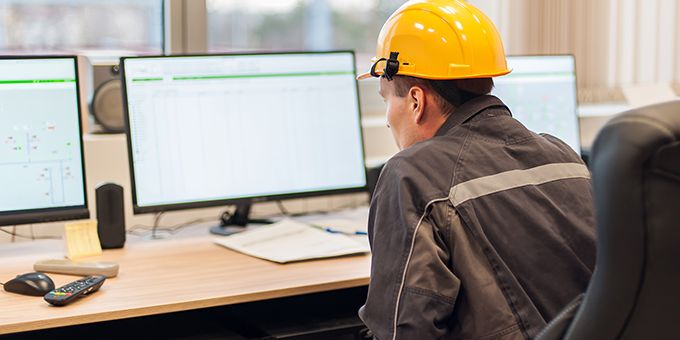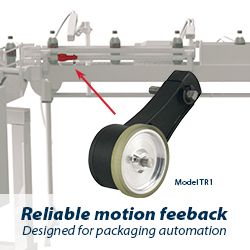According to a Deloitte global survey, 94 per cent of executives in industrial companies consider digital transformation a top priority, but only 14 per cent believe their factories are ready for this big change.
 Achieving Plant Resiliency - Automation Technologies That Can Make Production More Effective
Achieving Plant Resiliency - Automation Technologies That Can Make Production More Effective

Sean Robison, Service Leader | Novotek UK and Ireland
According to the Purchasing Manager’s Index, the UK economy fell rapidly during the first lockdown in 2020, falling further than it has in decades. So, what can manufacturers, engineers and plant managers do to safeguard their operations to withstand an economy in flux? Here, Sean Robison, Service leader at Novotek UK and Ireland, explains what modern technologies to implement that can improve overall equipment effectiveness and operational resiliency.
The UK’s first coronavirus lockdown revealed how much factories need to evolve to continue production, especially during unpredictable market conditions. The Purchasing Managers' Index (PMI) in the manufacturing sector collapsed from 43.9 in March 2020 to 16.6 in April 2020. Even if the situation is slowly going back to normal, plant managers and business executives need to set very clear strategies to ensure they can reach targets and avoid closure.
Plants fitted with modern technologies, such as automation systems, data analytics and remote-control systems, had a better chance of remaining operational during the lockdown. This is because these solutions allow remote working and can underpin some processes independently of constant engineer input. However, even before COVID-19, many business executives were unwilling to digitalise their factories despite knowing about the benefits of these technologies.
According to a Deloitte global survey, 94 per cent of executives in industrial companies consider digital transformation a top priority, but only 14 per cent believe their factories are ready for this big change. The main challenges are costs, lack of skills from the technicians and lack of evidence of the results from other plant managers currently using automation systems.
With or without proof, we are not in the ’90s anymore and plant managers should say goodbye to traditional operational strategies and the classic spreadsheets to start an affordable digital transformation to make their factories more resilient.
Today, resiliency is the key to opening up new metaphorical horizons in the plant and enabling a more collaborative work environment. With the right technology in place, data provided by advanced engineering systems is easier to understand, meaning plant managers and colleagues can get quick, effective results without the unnecessary complication of manually analysing data.
The power of resilience
Resilience means plant managers and engineers can actually access information that, without automated and modern technologies, would be highly challenging to get. Back in the 1990s, plant managers were using thousands of different spreadsheets to check what materials they needed for each production line, where all the resources were, why the machine was vibrating more than usual, and other indicators of performance.
The hardest part was maintaining and sharing this information in real-time with the other departments in the factory and making the information accessible and understandable to different plant managers, engineers and technicians from different levels and background.
Today, instead, since everything is controlled and monitored by specific software and sensors, data can be simplified for all skills. This makes it much easier to understand what’s happening and to plan next actions in advance, without waiting for a machine to break or for a plant engineer in the other department to answer.
This digitalisation won’t just make the factory more resilient, but actually more efficient on many different levels as it will be possible to reduce waste, improve energy power and make the production line more transparent, meaning the plant can clearly prove how every step of the production happened in terms of sustainability.
Systems to use
The first step in this digitalisation process is the installation of historian systems and HMI/SCADA solutions, which can help collect data at a local level.
The data collected from the machines will give plant managers information about the production line and the condition of their machinery. Even though HMI/SCADA solutions enable real-time data collection, the functions can be limited because the data is specific to each production line segment, so it does not generally provide enough useful data to have a complete overview of factory-wide operations.
To have a more comprehensive understanding, the next step is to install a manufacturing operations system to aggregate and visualise the data. Plant managers can then use advanced features to make comparisons and important evaluations about machine performances and the production line.
Most importantly, it is a way to work together with different departments, including people who are not physically in the factory. Regardless of location or skills, you’ll be able to understand what’s happening in the plant and choose the best course of action.
With such a system, everybody can build reports and search data using normal descriptive terms or categories without the need to be familiar with each specific data source in detail.
The system recommended by Novotek is not just easy to use, but also very easy to install. If plant managers were already using historians or HMI/SCADA solutions, they will only need as little as 30 minutes to plug the solution into the machine and to begin collecting and visualising data.
Data strategy
Being resilient in a plant means that data is used in a strategic and practical way. If plant managers had to go through every single historian software, they wouldn’t get a comprehensive analysis of the overall production line, which can slow down the actions of the different departments.
Thanks to solutions like this, data insights are interrelated and nothing is left to doubt. In effect, plant managers will have an explanation for everything. In real-time, there would be an explanation why a machine is vibrating more than usual or why more materials have been used than in the month before, for example. But most importantly, plant managers will be able to get enough comprehensive information without physically being in the plant, which is the next step to making factories more productive for the future.
The biggest lesson from COVID-19 is that data is essential and automation technologies are vital not just during a pandemic, but always. If UK industry wants to accelerate a return to form and come back stronger and more resilient than before, it can’t be unprepared. By changing strategy, investing in software that is very intuitive and accessible by plant managers with basic project management skills to advanced engineers and manufacturers, plants will work efficiently in any extraordinary circumstances.
The content & opinions in this article are the author’s and do not necessarily represent the views of ManufacturingTomorrow
Comments (0)
This post does not have any comments. Be the first to leave a comment below.
Featured Product

